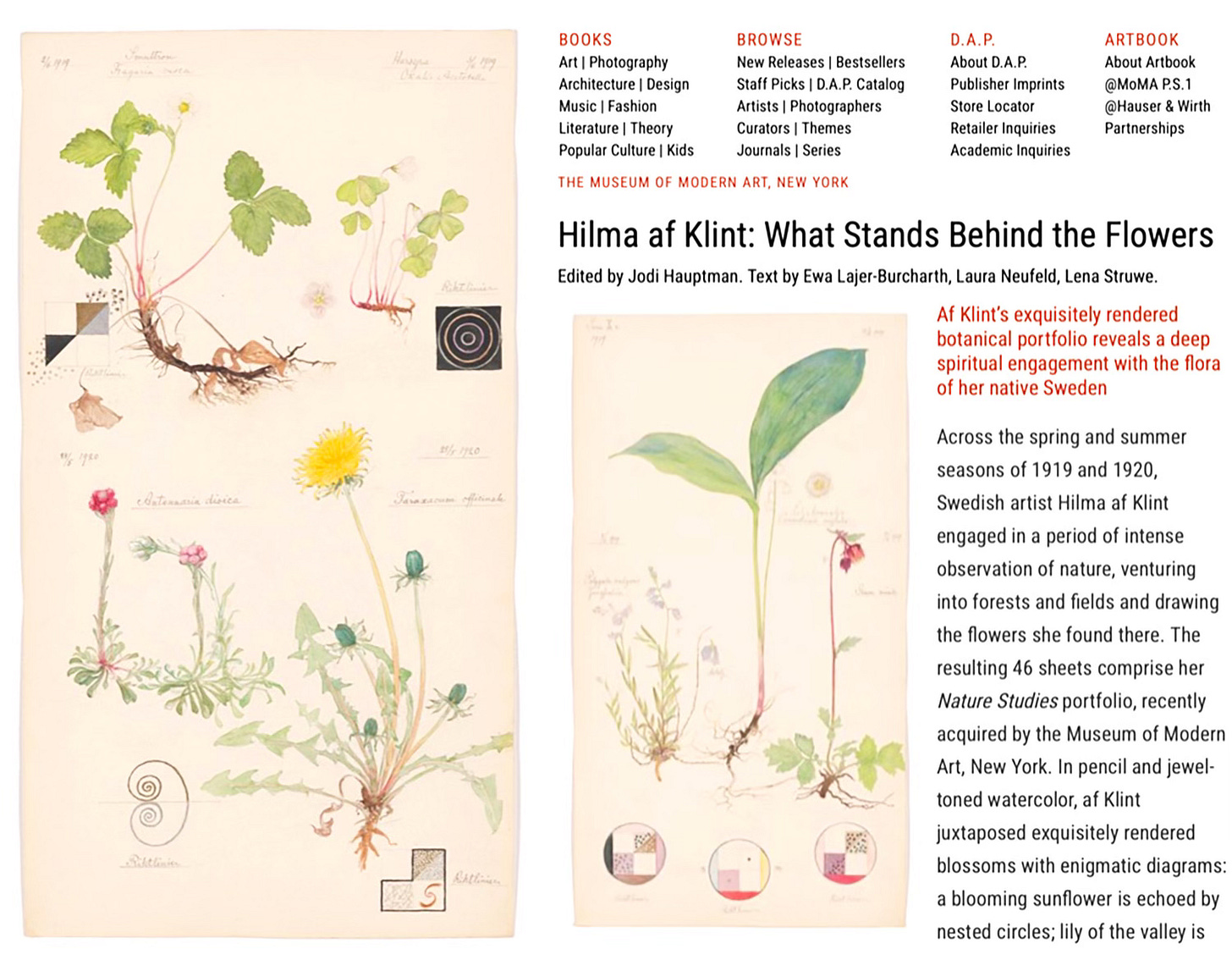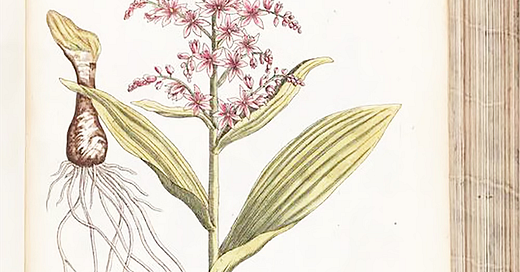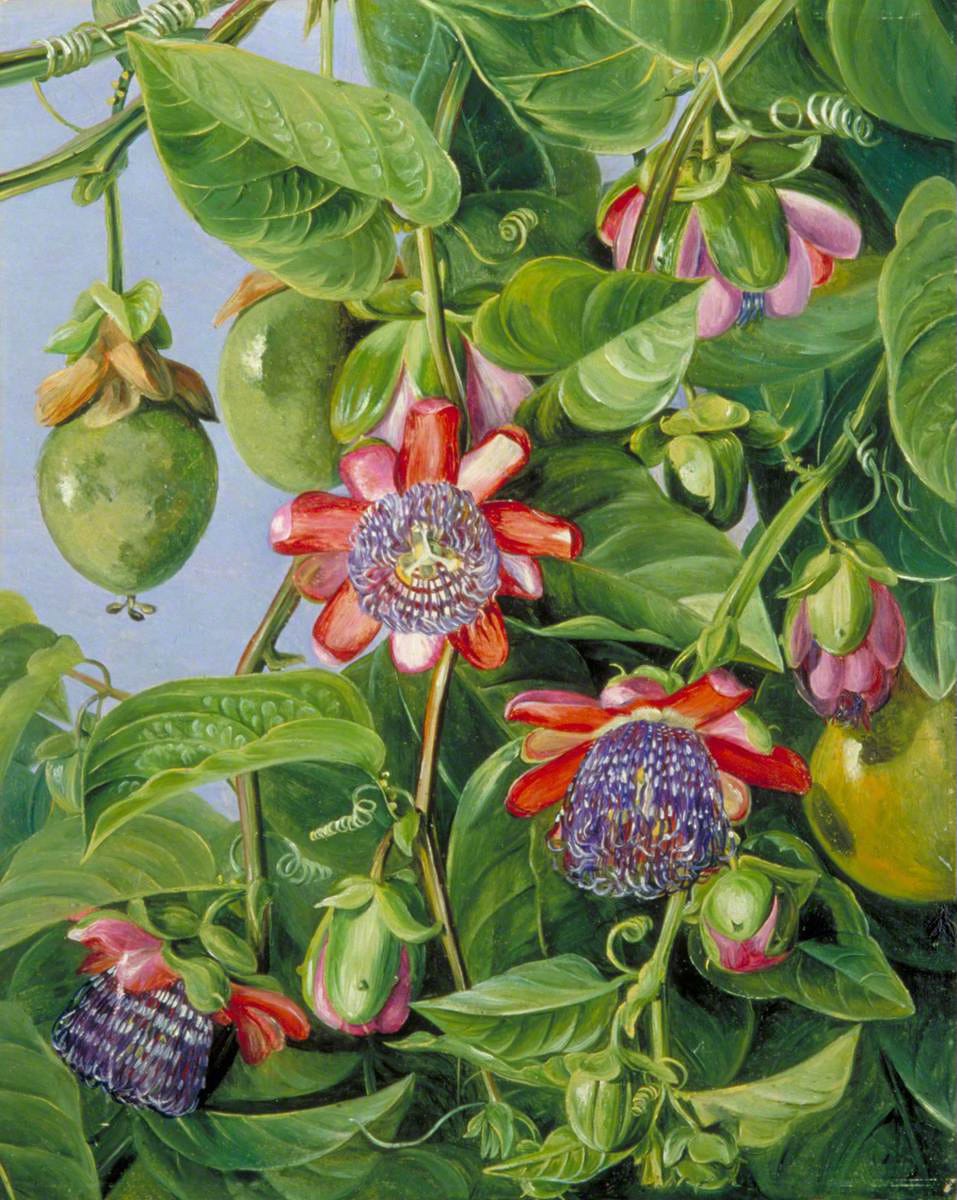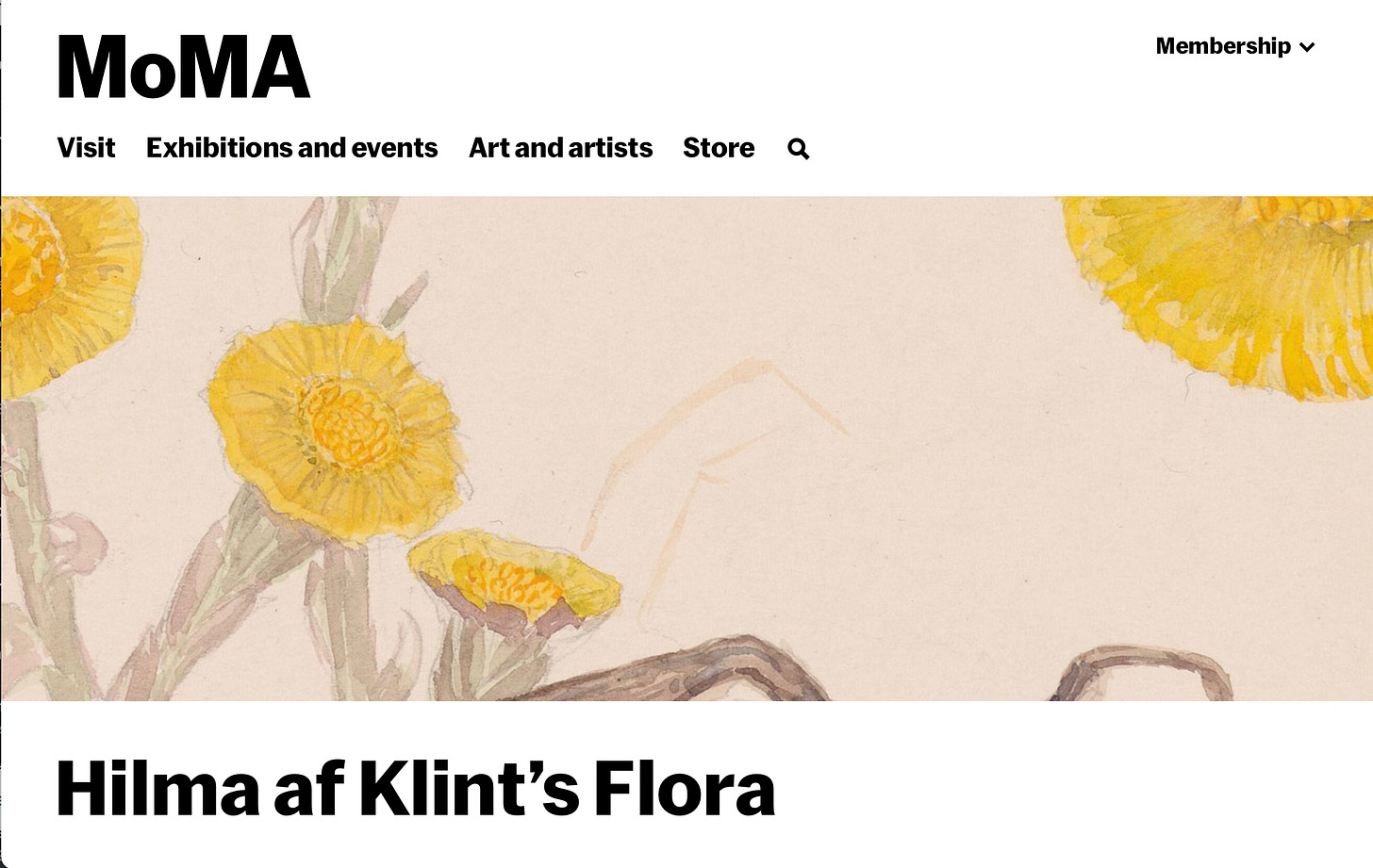Art (and plants) re-igniting Soulfulness
[Soulful Experiences] Nurtured back to Soulful sharing
Successive months fulfilling (creative) commitments left me almost “speechless” on sustaining an active flow of writings here on Substack - until Art, and (live) plants that I enjoy meeting in my daily walks, slowly sparked me back.
Creative output requires soul replenishing
For months now, I have been engaged in offering a series of courses on Flower Essence Therapy, with the last one - co-created with my colleague Kathleen on Botanical Families and Flower Essences work - calling for even more focus on preparation and research. When completing this period of end to end commitments, my creative-productive-self has simply demanded a pause.
While I am able to attend to all that has to get done, as I age, I find that I do not enjoy switching modes of attention for multitasking, something that used to be the norm for most of my life. Recently, while being very focused on specific tasks, I ended up feeling switched off from the flow of telling (plants and soulful) stories in writing.
Furthermore, during this time, my personal selections of essences got geared towards specific research inquiries, and I was not even taking our beloved Iris essence or other preferred connectedness companions, like the **Mountain Forget-me-Not.**
Most beautiful art is now re-sparking my soul
Providential re-sparking is now replenishing me, through Art, beauty, plants… and specifically through this book and the exhibit poster I am now privileged to have.
A friend and essences student shared about this current MoMA Exhibit on the Art of Hilma af Klint, showing to the world a more recently revealed part of her work that has been called: “What Stands Behind the Flowers”.
As you can imagine, the name in itself immediately sparked my interest. I promptly found the Museum’s offer of the book and poster, and both these beauties eventually arrived. The impact these had on me over the last few weeks, and its correlations to my other reflections shared below, is the subject of this post.
If you can, go see this exhibit in person
While I have not been able to see any of Hilma’s work in person (yet), I heard from my friend who had it planned and actually travelled across the country to see it!!! She reported it has been a remarkable experience.

Receiving and perusing this amazing book, gazing towards it as I walk around my coffee table, opening it, touching its pages, diving into its remarkable quality, has been truly nourishing to my soul. I will say more on this experience at the end.
Watercolors of plants and dimensional portals
Many times in this life I have felt an endless fascination with Botanical drawings. The pull I have felt from how plants are depicted, especially through watercolor, always has the power of taking me to soulful dimensions that I truly love.
There were times in which I felt a sense of a soul memory, a feeling of being focused on registering and coloring detailed prints, maybe when books were all colored by hand. A sense of truly loving this work, evocations that bring tears to my eyes.
One such glimpse into soul memory came through when I visited one of the few remaining edifications of the Glastonbury Abbey - the Abbotts kitchen - connected to the herb garden. I was specifically touched when entering that small building and walking through the adjacent herb garden: I was taken by a feeling of immense joy and gratitude, evoking lives of prayer and dedication to healing with plants.
This was a deep and fond memory, one of being part of groups of monks, dedicated to caring for others in need through the study of healing and companion plants, a whole story in itself that I will, in time, share here as well.
Precise ways of observing plants
Hanging on my walls I always loved having Botanical Illustrations and other watercolors. I delight in starting each year looking at the beautifully printed annual Cavallini wall calendars, all of which I save, and some even get framed. From my own mother’s art work, watercolors have always been my very favorites, and the ones I like to have around me.
As I look through this from a Soulfulness perspective, I have clues as to why that is.

Before photography, that evolved to offer the required precision only much later, hand drawings, fine engravings and watercolors were the only way we were able to document an image of a plant that was being studied.
We also know that, for all purposes, for a long time illustrated books were copied and colored by hand, so that specific knowledge could be shared. This activity is known to have most often been done in monasteries.
When my eyes get to contemplate well printed medieval illustrations, I definitely feel touched on personal chords of wonder and devotion. And this also makes me curious.
Women illustrators are now my historical heroes
Over these last decades, I have learned about some individuals who happen to have been courageous women that became personal inspirational heroes.
In my latest visit to the Chelsea Psychic Gardens, also called the Apothecaries Garden, in London (a place that also deserves a future posts), I became aware of Elizabeth Blackwell’s exemplary contribution to the art of botanical documentation.
She has quite a dramatic story: her husband had gone to prison for debt, and she had to fight towards freeing him, while maintaining herself and their child. British born Elizabeth Blackwell (1699 - 1758), daughter of an artist, developed the ability of precisely depicting plants by applying her skills and holding exceptionally focused determination. With the help of others who supported and funded her ambitious project, she moved to a place adjacent to the gardens and, for a period of six years, produced a multitude of engravings, to be further colored by hand. This resulted in the landmark book: A Curious Herbal, the very first herbal published by a woman artist, illustrating medicinal plants that were being used by physicians and apothecaries, and/or being added to gardens and orchards.

A replica of this original book is available, but in my view, the images are not nearly as good as the scans of the original prints that can be found online. It seems to me the process they’ve used to render these scans has muddled their original colors.
Marianne North, another most inspiring Botanical artist
If, like me, you have felt drawn to visit Kew Gardens when in the UK, you probably walked by, or even entered, the Mariane North Gallery, that has been updated over the years. An unusually independent woman for her time, Marianne was prolific in her production, all in the form of oil paintings done over wood, her style informal, unconventional and exuberantly expressive.
I have been lucky enough to receive as a gift a beautifully produced publication, available only in Brazilian Portuguese (but downloadable through this link: “A Viagem ao Brasil de Marianne North”, by Julio Bandeira) of this finely produced publication about her travels and life experience visiting and painting plants and landscapes from that part of the world, this being only one of the many chapters of her most adventurous life.
Quoting the above book on her choices, after caring for her ailing mother to her death, and following her father’s death, she refuses marriage and in 1869 chooses life as a free woman:
For her, marriage was an institution “that led to a terrible experience, in which the woman was transformed into a kind of eminent servant.” If her commitment to her widowed father had allowed her to share a passion for travel and botany from an early age, her single status was what made her her own woman after her father’s death on October 29, 1869, allowing her to freely travel. Between 1871 and 1885, she would make two circumnavigations, crossing the Atlantic eight times and the Indian and Pacific Oceans twice, going from one hemisphere to the other with more ease than few Europeans would have had crossing the English Channel.
Marianne North (1830 - 1890) has been an extraordinary woman, especially for her time! You can read about her in this short - text only - publication written by her sister, in this book in English called **Abundant Beauty.** For visuals, there are many publications that contain her free style depiction of exquisite plants, as well as numerous Public Domain images, like the one above, from the places she visited in her extremely rich life.
In case you are as passionate, as I am, for Botanical Art
And in case you are also interested in current perspectives on plant evolution, I recommend this worthwhile publication called The Art of Plant Evolution, a very well printed book based on an exhibit at Kew that combined historical botanical illustrations with current scientific discoveries shown through well designed diagrams. I have read the whole book and intend to read it again and again. The curated and carefully chosen illustrations are precious! In it, you will find reference to Margaret Mee, yet another Botanical Artist hero that truly inspires us.
Hilma af Klint’s multidimensional perspective
Hilma af Klint’s art and work takes us beyond the Botanical illustration approach, entering levels of multidimensionality in ways very rarely seen.
Hilma is known to have been an initiate in advanced Spiritual studies, and in this video, I was amazed to learn that, before she died, she asked for her work to stay sealed for a few decades, before being shared with the world.
Hilma’s watercolors are portals into dimensions of beauty, and there is so much to her explorations to be learned and taken in. I am just beginning to be blessed by it.
The book “What Lies Beyond the Flowers” is an extraordinary publication, in terms of its editing concept, quality of printing and production. From its most exquisitely beautiful “dust jacket”, with finely printed luminous type and perfectly reproduced watercolor background, to the quality of the paper and the printing inside, it provides an experience of pure delight.
I say this without having yet really read about her experience of drawing these plants through many months, and attuning to the invisible levels and geometry of the living forces that bring their beings into form. If you’ve read more about this, please add your experience to the comments below.
What I like the most, in this gorgeous book, are the magnifications of watercolor details, taking us into these works in ways that we almost never get to see.
Enlargements of the translucent beauty of flowers!!
Look through more images in these articles on the MoMA website.
I am of the view that we should be invited to travel through all details of watercolors of plants. All watercolor books should be like this. Through transparency and color, these details take us into dimensions of beauty, that enrapture us in unique ways.
These are, indeed, ways that fluently re-spark Soulfulness.







And I've only recently been introduced to Hilma af Klint by my friend, April McMurtry! I'm so drawn to Hilma's work, as I am with many of the turn of the last century mystics and mystery school society members! But I absolutely love plant drawings of all kinds. When my family traveled to Vienna over New Years, there was this ancient manuscript on display at the Austrian National Library: the Vienna Dioscurides. It's assumed to have been created in Constantinople in 500 AD and it's a codex of images of almost 400 medicinal plants! The image on display was of Chinese Lantern plant, which I've never met in person. I must've stood there for 10 minutes staring amongst the throngs of people, unwilling to peel my eyes from the ancient text. What a treasure!
Such a lovely post Ruth 🌸Botanical illustrations through the ages - science and spirit. So dreamy and divine!! I wish we could have been at the af Klint exhibit together. I’ll be adding many other books you mentioned to my wish list. 🙏🏼💖